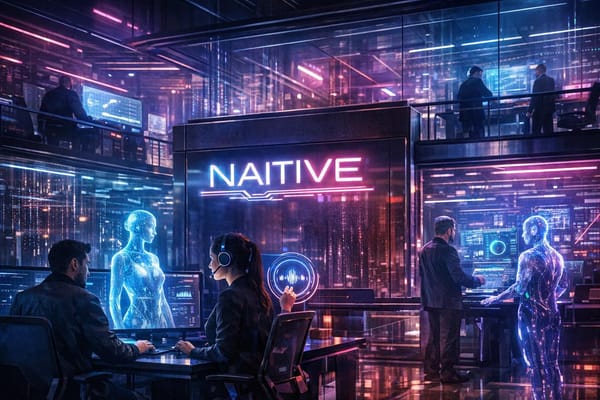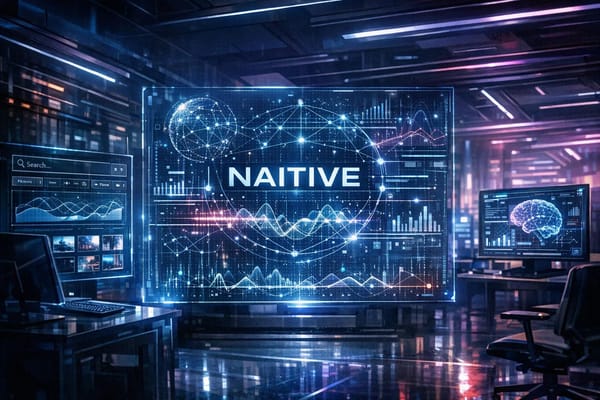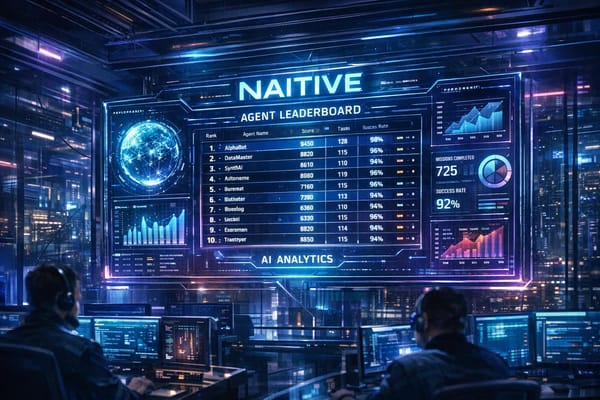Unlocking Potential: The Impact of OpenAI's GPT-4.1 Models on Software Development

There’s something exhilarating about technology evolving at a rapid pace. On April 14, 2025, I found myself caught up in the buzz surrounding OpenAI's latest launch—the GPT-4.1 models. These weren't just minor updates; they promised substantial breakthroughs that could shift the way we think about coding and AI applications. With every new iteration, I’ve seen how they reshape our workflows—and I couldn’t help but feel a sense of anticipation for what was next.
A New Era in AI: Understanding GPT-4.1 and Its Variants
Artificial Intelligence is evolving rapidly. One of the most exciting developments is the introduction of GPT-4.1. This new model brings significant improvements over its predecessor, GPT-4o. But what exactly makes GPT-4.1 stand out? Let's dive into the details.
Overview of GPT-4.1 and Its Improvements
GPT-4.1 is not just an incremental update; it's a leap forward in AI technology. It boasts enhanced coding capabilities, better instruction following, and improved long-context comprehension. These enhancements make it a powerful tool for developers and businesses alike.
- Improved Coding Capabilities: GPT-4.1 has shown a remarkable performance increase in coding tasks.
- Better Instruction Following: The model is designed to follow user instructions more accurately.
- Long-Context Comprehension: With a context window of up to 1 million tokens, it can handle larger datasets effectively.
Introduction to Its Three Models
OpenAI has introduced three variants of GPT-4.1: full, mini, and nano. Each model is tailored for different use cases and performance needs.
- Full Model: This is the most powerful version, ideal for complex tasks.
- Mini Model: This variant offers a balance between performance and efficiency, making it suitable for smaller applications.
- Nano Model: The smallest and fastest, designed for quick tasks with lower resource requirements.
Enhanced Capabilities
One of the standout features of GPT-4.1 is its ability to process a larger context window. Imagine being able to analyze entire documents or datasets in one go. This capability opens up new possibilities for businesses and developers.
Additionally, the model has reduced latency, meaning it can deliver results faster than ever before. This is crucial in real-world applications where time is of the essence.
Knowledge Cutoff and Comparison with Previous Models
It's important to note that GPT-4.1 has a knowledge cutoff extending to June 2024. This means it is equipped with the latest information and advancements, making it more relevant for current applications.
When we compare GPT-4.1 with previous models, the improvements are clear:
- Coding Performance: GPT-4.1 achieved 54.6% on the SWE-bench Verified benchmark, a significant improvement over GPT-4o.
- Instruction Following: It scores 38.3% on the Scale's MultiChallenge benchmark, reflecting a 10.5% increase from GPT-4o.
Performance Data
To illustrate the advancements, here’s a table summarizing the key performance metrics:
| Feature | Value |
|---|---|
| Context Window | 1 million tokens |
| Coding Performance | 54.6% on SWE-bench Verified benchmark |
Real-World Impact
What does this mean for developers? The enhancements in GPT-4.1 are not just theoretical. They have real-world applications. For instance, companies like Windsurf and Qodo have reported significant performance increases in their coding benchmarks. Windsurf noted a 60% improvement in their internal coding tasks, leading to faster iterations.
Moreover, the instruction following capabilities have also improved. GPT-4.1 scored 87.4% on IFEval, showcasing its ability to adhere to various instructions consistently. This reliability is crucial for developers building complex systems.
"The advancements in AI like GPT-4.1 are paving a new path for how we approach technology in everyday life." - OpenAI Representative
Conclusion
With the launch of GPT-4.1, we are witnessing a significant shift in AI capabilities. The model's ability to handle larger contexts and perform better in coding tasks sets a new standard in the industry. As developers, we can look forward to leveraging these advancements to create more efficient and effective applications.
In summary, GPT-4.1 is not just an upgrade; it's a game-changer in the world of artificial intelligence.

Benchmark Performance: How GPT-4.1 Stands Out
When it comes to AI models, performance is everything. We want speed, accuracy, and reliability. With the launch of GPT-4.1, OpenAI has set a new standard in the industry. Let's dive into how GPT-4.1 compares to its predecessors and what these improvements mean for developers and users alike.
Performance Metrics Comparison: GPT-4.1 vs. Prior Models
First, let's look at the numbers. GPT-4.1 has shown remarkable improvements in various performance metrics. For instance, it achieved a score of 54.6% on the SWE-bench Verified benchmark. This reflects a 21.4% increase from GPT-4o. This is not just a small bump; it’s a significant leap that can change how we approach coding tasks.
But what does this mean in practical terms? Imagine a developer who used to spend hours debugging code. With GPT-4.1, they can now complete tasks faster and more accurately. This is a game-changer in the software engineering landscape.
Significance of a 21.4% Increase in Coding Tasks Performance
The 21.4% increase in coding performance is not just a statistic; it's a reflection of the model's enhanced capabilities. The improvements stem from better handling of code diffs and a reduction in extraneous edits. For example, the occurrence of unnecessary edits dropped from 9% with GPT-4o to just 2% with GPT-4.1. This means cleaner code and less time spent on revisions.
Real-world testing backs this up. Companies like Windsurf reported a 60% performance boost when using GPT-4.1 compared to their previous models. This kind of improvement can lead to quicker iterations and more efficient workflows. Isn’t that what every developer dreams of?
Insights on Instruction Following Improvements
Instruction following is another area where GPT-4.1 shines. It scored 38.3% on the Scale's MultiChallenge benchmark, marking a 10.5% improvement from its predecessor. This means that the model is better at understanding and executing complex instructions. Whether it’s handling customer requests or extracting insights from large documents, GPT-4.1 is more reliable.
Consider this: if you’re developing an application that requires precise responses to user queries, GPT-4.1 can deliver with improved accuracy. The model’s ability to follow instructions consistently makes it a valuable tool for developers.
"In software engineering, accuracy and speed are paramount, and GPT-4.1 delivers on both fronts." - Tech Industry Expert
Visualizing the Data
To better understand these improvements, let’s take a look at the following chart that illustrates the performance metrics:
As you can see from the chart, the improvements in coding tasks and instruction following are significant. These enhancements not only boost performance but also enhance the overall user experience.
In summary, GPT-4.1 is not just another model; it’s a significant advancement in AI technology. With its impressive performance metrics and real-world applications, it stands out as a leader in the field. The future looks bright for developers and users alike, as we embrace the capabilities of this powerful tool.

Practical Applications: Realizing the Capabilities of GPT-4.1
As we dive into the world of AI, the recent launch of GPT-4.1 by OpenAI marks a significant milestone. This model is not just another upgrade; it’s a game-changer. With its advanced capabilities, developers are finding new ways to enhance their applications. Let’s explore some practical applications and insights into how GPT-4.1 is reshaping the landscape.
Case Studies of Successful Implementations
Early adopters of GPT-4.1 have already showcased its potential through various case studies. For instance, the company Windsurf reported a staggering 60% increase in performance relative to their internal coding benchmarks. This improvement has led to quicker iterations and smoother workflows. Isn’t it fascinating how a single tool can transform the efficiency of an entire team?
Similarly, Qodo evaluated GPT-4.1 against other leading models for code reviews. They found that GPT-4.1 provided superior suggestions in 55% of cases. This improvement not only enhances precision but also boosts the comprehensiveness of code reviews. As one developer at Qodo put it,
“We’re not just integrating AI; we’re partnering with it to enhance our workflows and productivity.”
API Exclusivity and Its Implications
One of the most talked-about aspects of GPT-4.1 is its API exclusivity. This means that developers will need to access these capabilities through the API, which raises questions about accessibility and integration. While this exclusivity may seem limiting, it also encourages developers to innovate. By focusing on the API, OpenAI is fostering a community that pushes the boundaries of what AI can do.
For developers, utilizing the Responses API can lead to the creation of innovative applications. Imagine building a customer support system that can handle complex queries with ease. The potential for AI to enhance user experiences is enormous. As we look to the future, the implications of this exclusivity will shape how developers approach AI integration.
Future Prospects for AI in Various Sectors
The future of AI, particularly with models like GPT-4.1, is bright. Various sectors, including legal and customer support, stand to benefit significantly. For example, in the legal field, the ability to analyze large datasets and documents quickly can save countless hours of manual work. Similarly, customer support teams can leverage AI to provide accurate responses, improving customer satisfaction.
As we consider these advancements, it’s essential to recognize the trajectory of AI in everyday tasks. Predictions suggest that as AI continues to evolve, it will become an integral part of our daily workflows. Developers who embrace these changes will be at the forefront of this revolution.
Data Insights
To further illustrate the capabilities of GPT-4.1, let’s take a look at some impressive data:
| Metric | Performance |
|---|---|
| Superior Suggestions in Code Reviews | 55% |
| Accuracy in Instruction Following | 87.4% |
These statistics highlight the model’s effectiveness in real-world applications. The 87.4% accuracy in instruction following, tested by Blue J, showcases its reliability in adhering to various types of instructions. This level of precision is crucial for developers looking to build robust applications.
Conclusion
In conclusion, the launch of GPT-4.1 by OpenAI represents a significant leap forward in practical AI applications. With its advanced capabilities, developers are empowered to create innovative solutions that enhance productivity and efficiency. As we witness the evolution of software engineering, it’s clear that AI will play a pivotal role in shaping the future. I am excited to see how the developer community will harness these advancements to unlock new opportunities and tackle complex challenges. The journey has just begun, and the possibilities are endless.
TL;DR: The launch of OpenAI's GPT-4.1 models marks a significant leap in AI capabilities, particularly in coding efficiency, instruction adherence, and multimodal understanding, shaping the future of software development.




